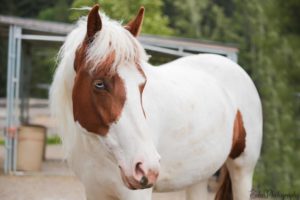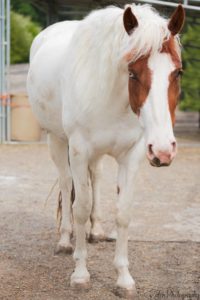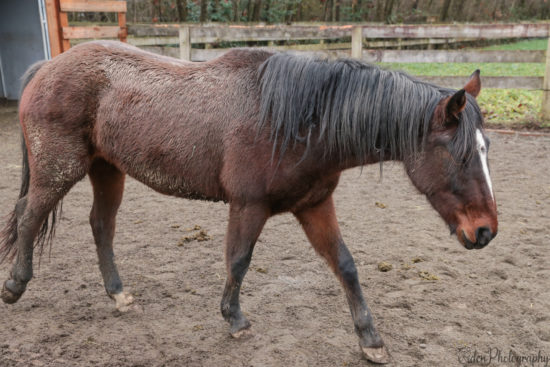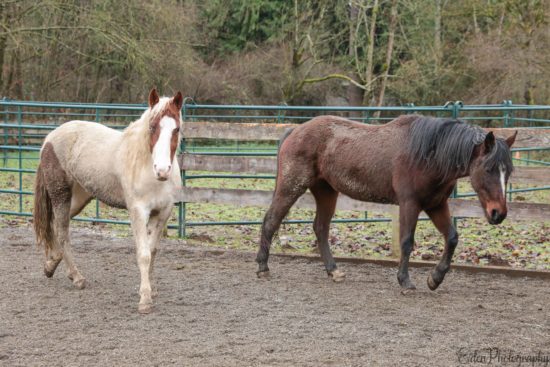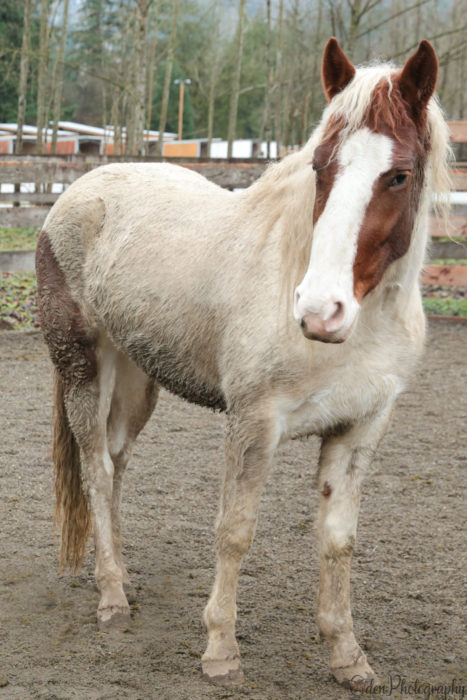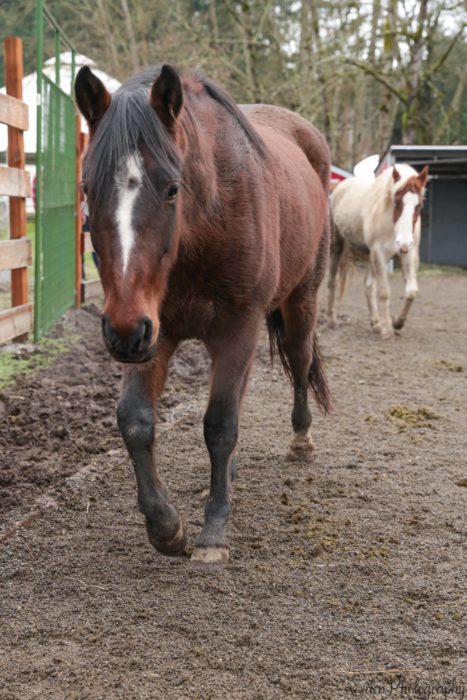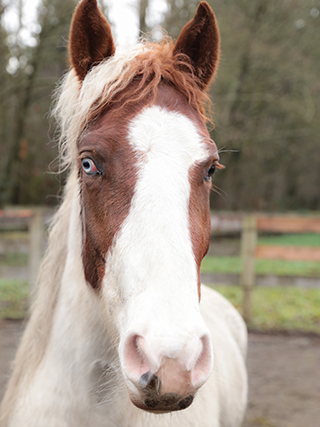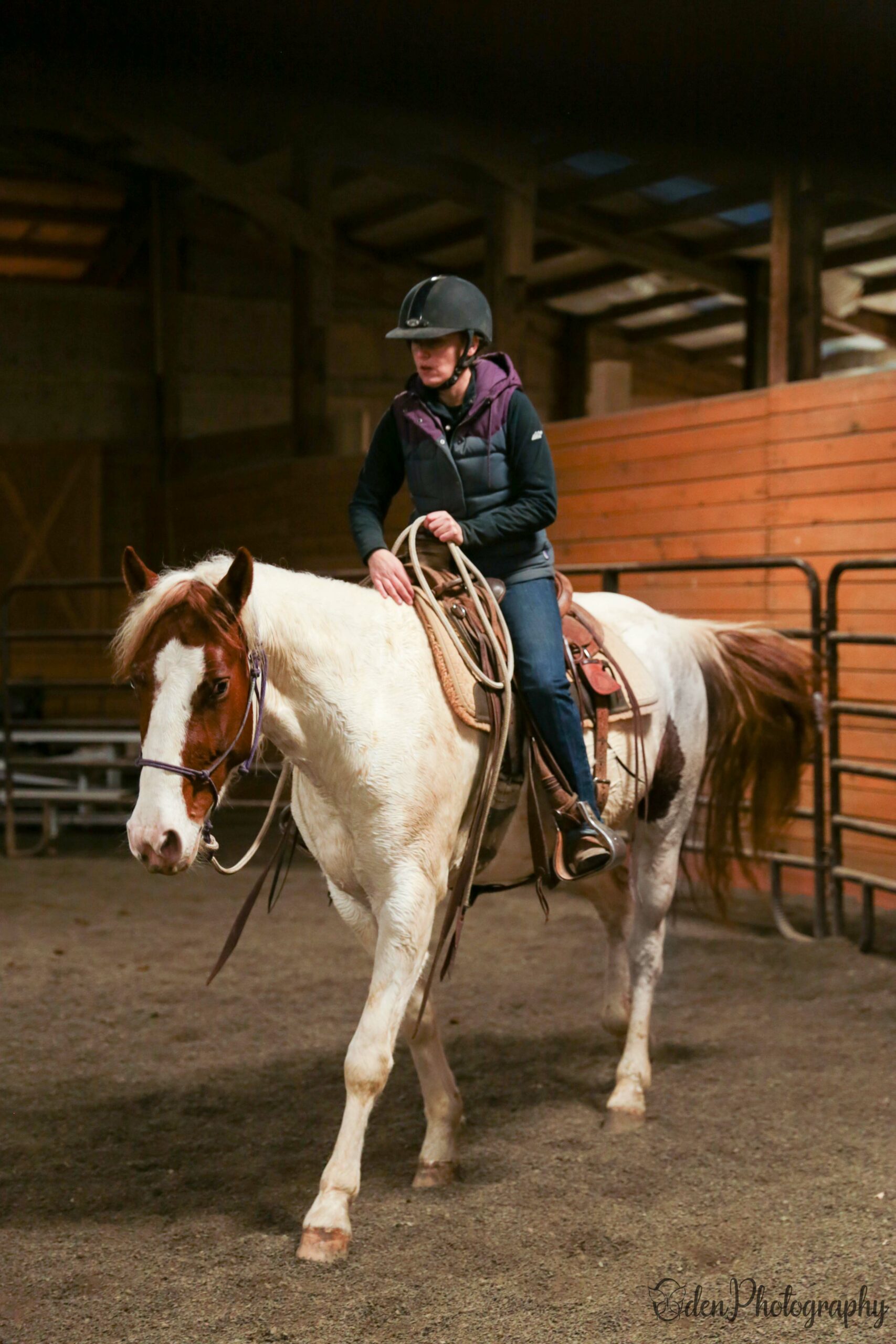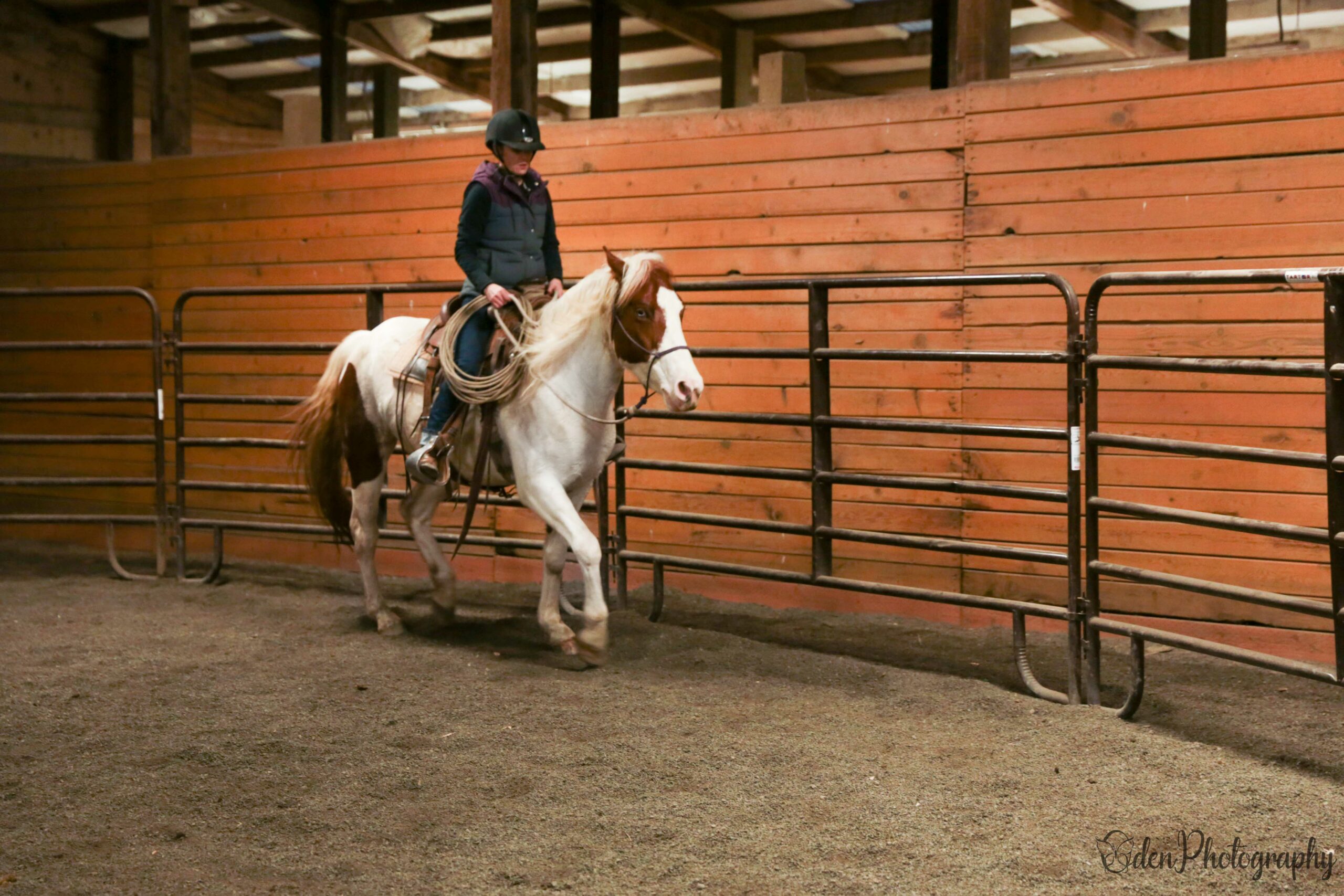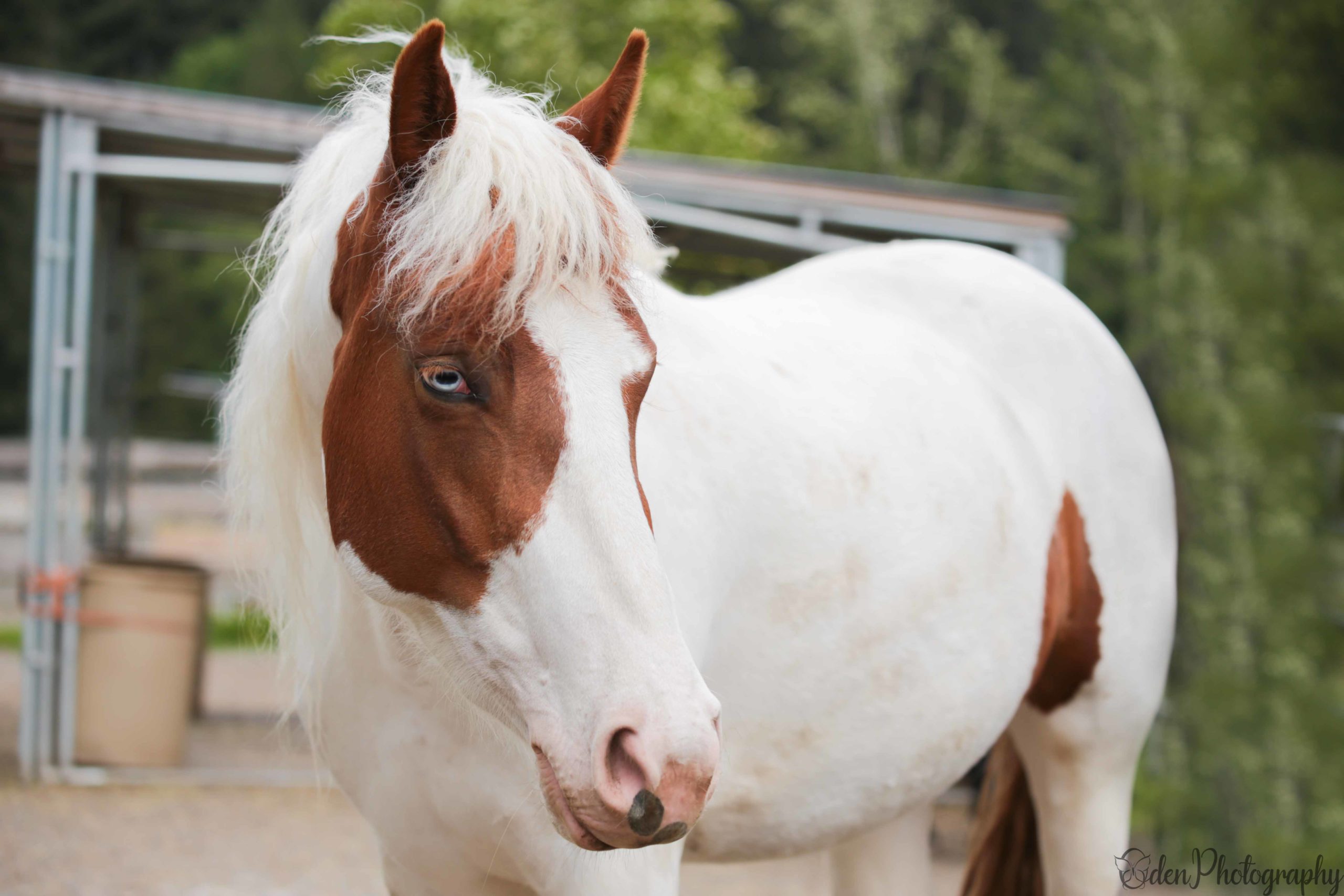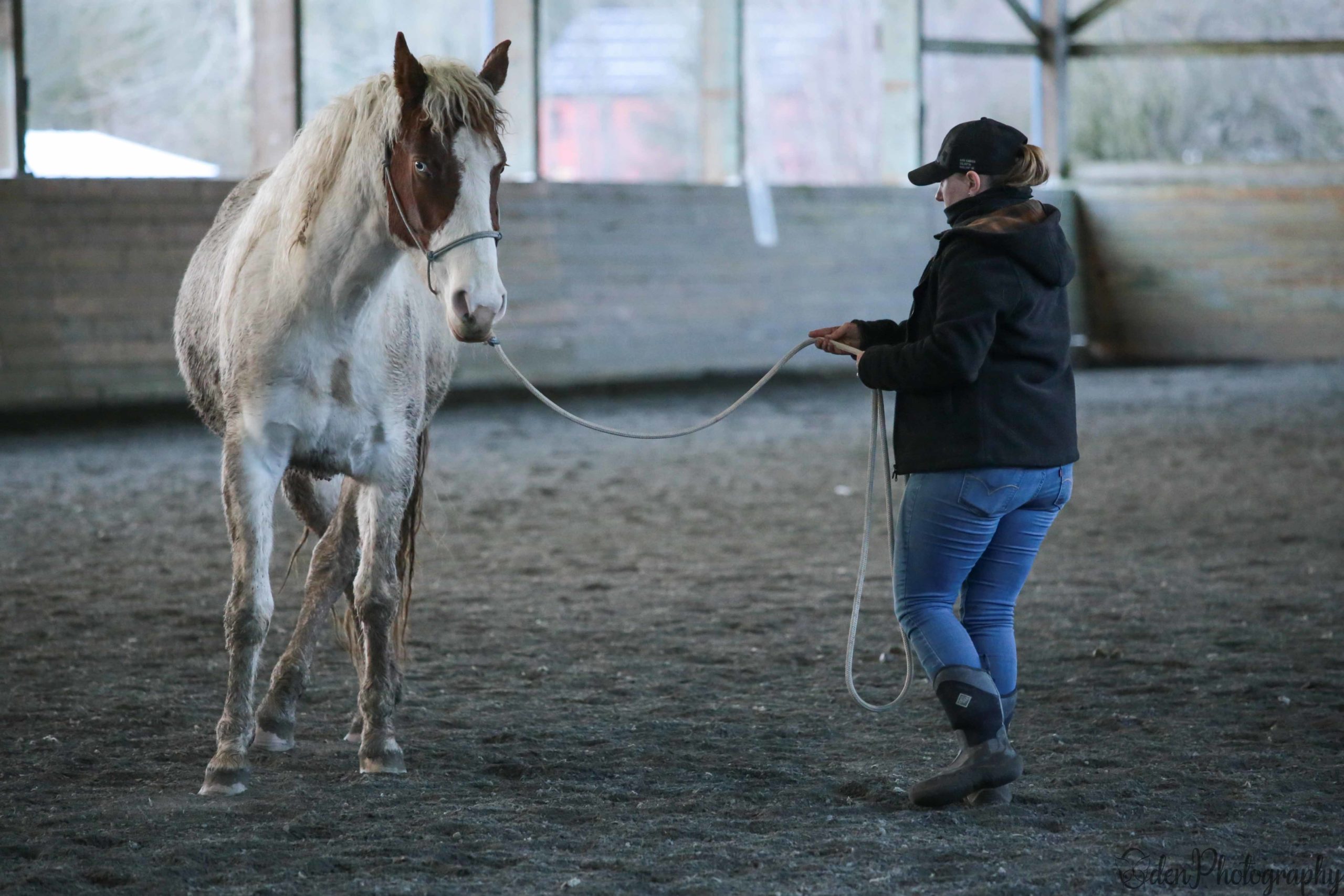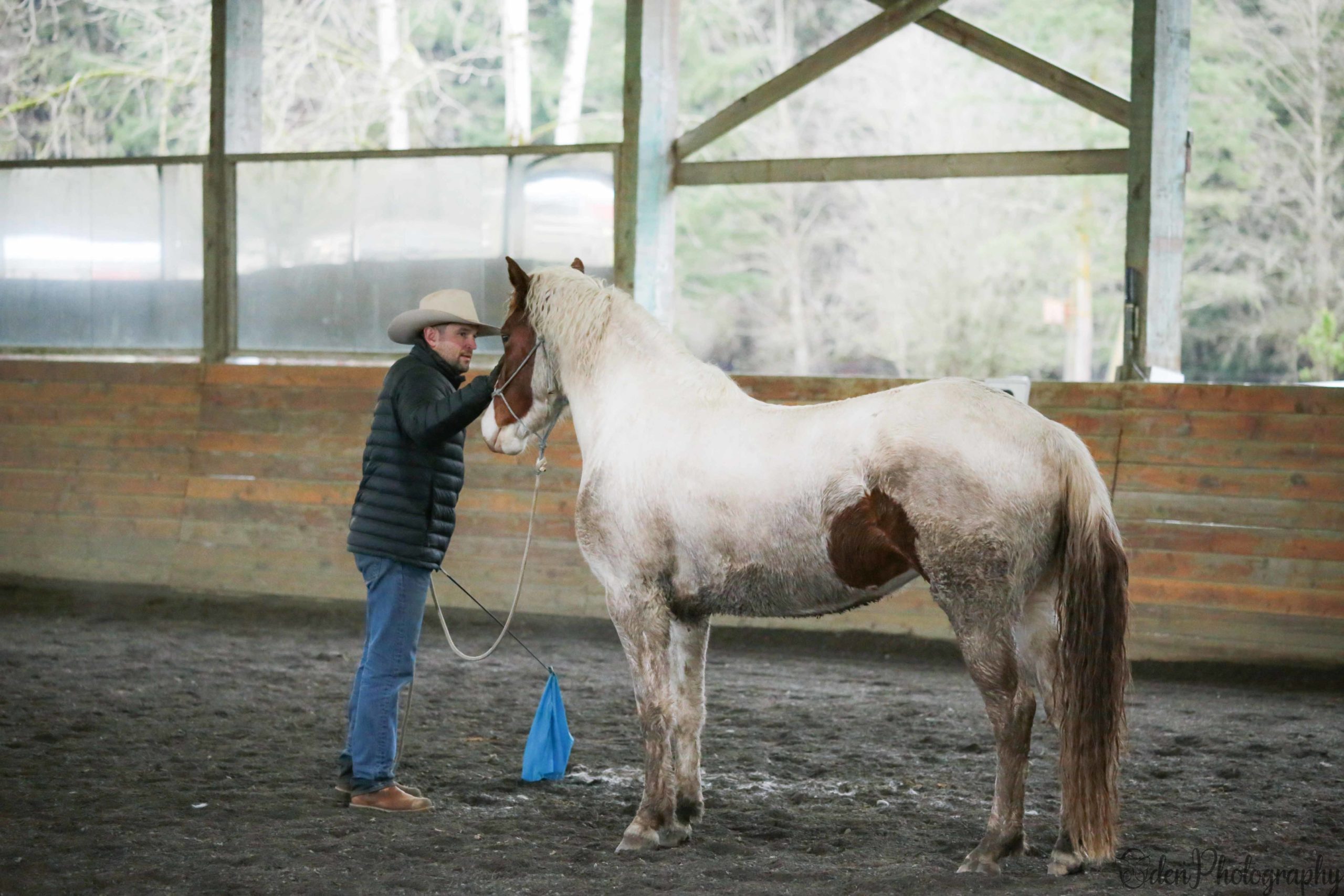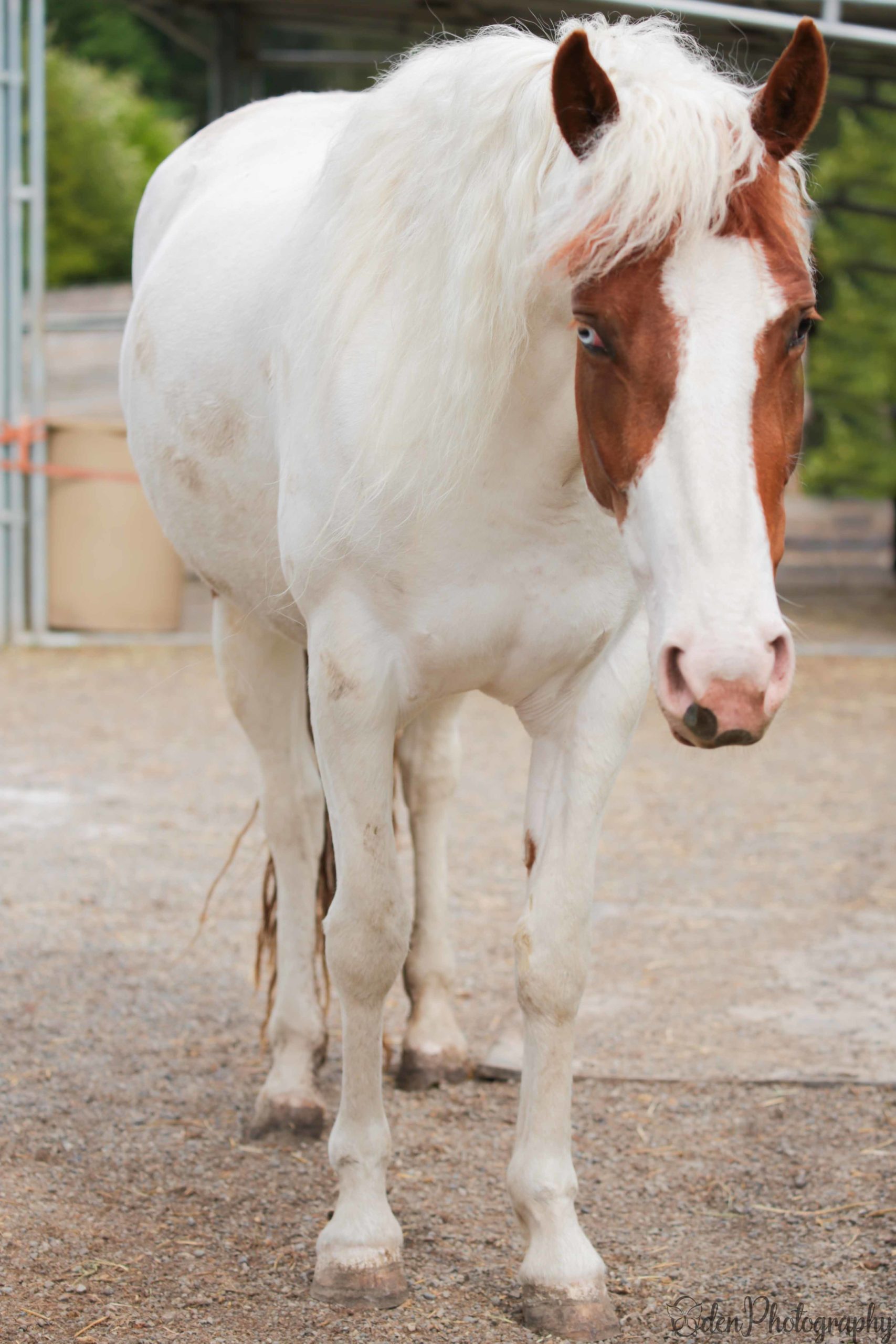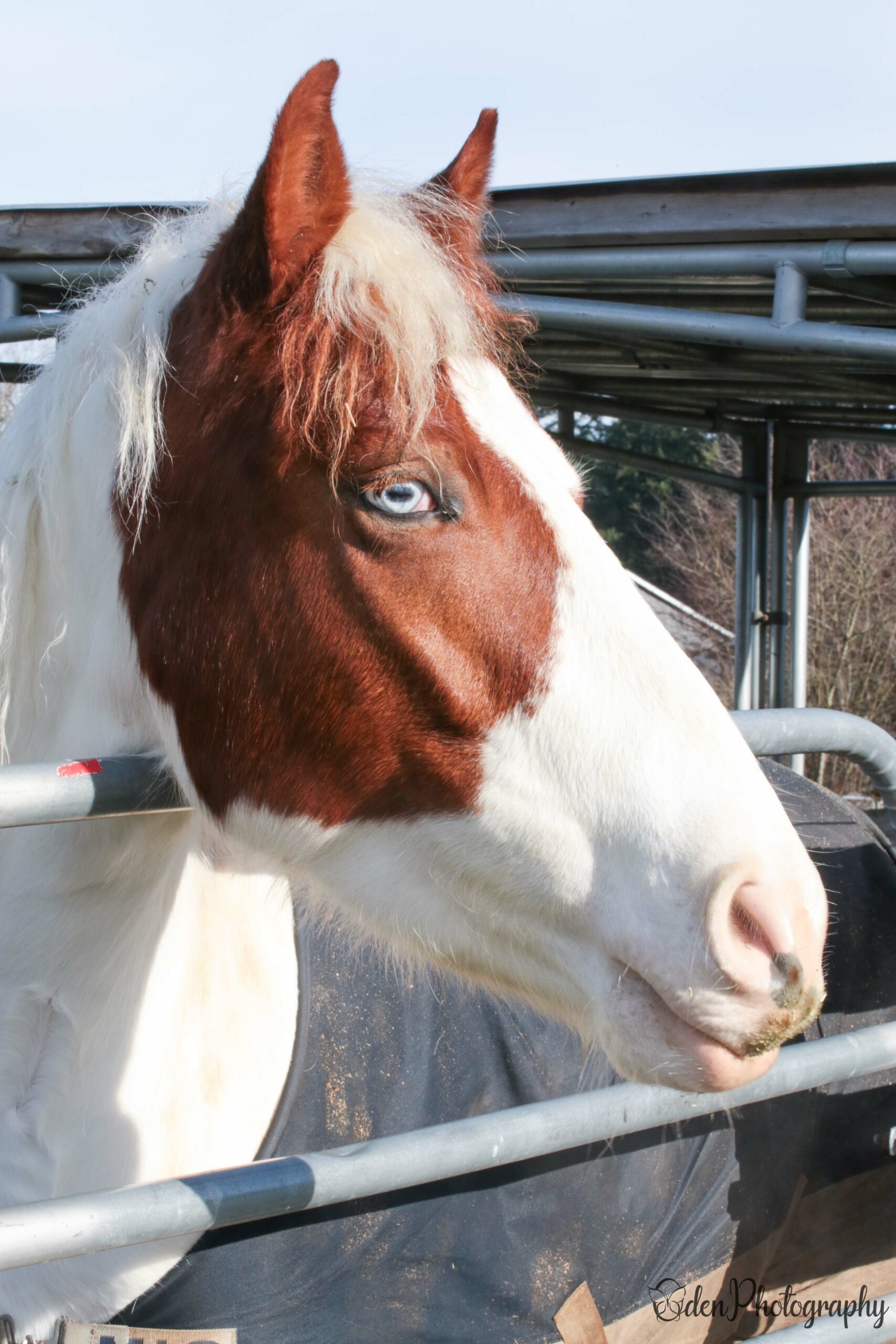Merry
2017 brown and white Paint mare
Type of Rescue: Owner Surrender
Intake Date: 12/14/2019
Length of Time with SAFE: 1 year, 9 months
Rest in Peace, Merry
Merry and Jollie were rescued from well-meaning people who adopted a pair of pregnant mares from an auction, and found themselves unable to care for the horses when the fillies were 3 years old. They were living in a remote location in eastern Washington where horsekeeping was difficult to begin with. Thanks to the efforts of several people in the horse community, the two older mares were taken in by Rodeo City Horse Rescue, and their fillies came to SAFE. During her time at SAFE, Merry was started under saddle and became a lovely riding horse. Sadly, we lost Merry to a serious colic, and a bright and promising horse was gone too soon.
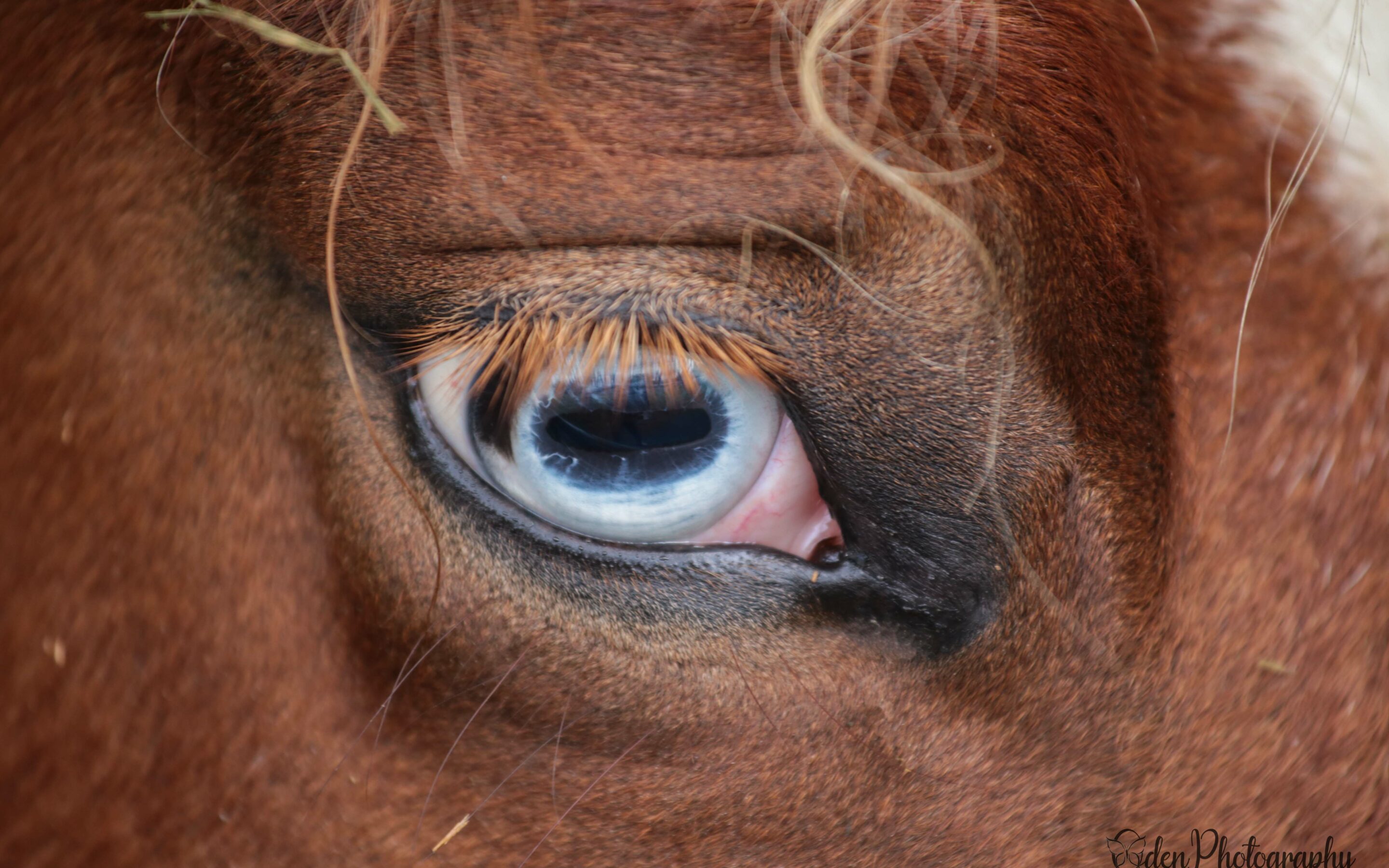
A Sad Goodbye
We are so sad to tell you that we lost Merry to colic yesterday.
Late Wednesday morning, Lily noticed that things were not right with Merry. She didn’t finish her breakfast, and was acting oddly, standing with her head down, pawing at the ground. Her vitals and gut sounds were normal, but her behavior pointed toward colic. She was given a dose of Banamine around noon per our vet’s instructions, and Lily, Kaya, and others spent most of the rest of the day hand walking her in 15 minute intervals, then turning her out to rest. Each time she was turned loose, she would lie down, usually with a small attempt to roll, or she’d stand and paw at the ground. Clearly something was not right.
Dr. Renner arrived later in the day. Merry was still a bit agitated so he gave her a light sedation, then performed a rectal exam and gave her some fluids. But again, there were no immediate signs that anything was wrong. He thought that perhaps we were seeing a viral thing, and instructed us to check her temp to see if she spiked a fever. In the meantime, we withheld her food, and set up the camera in her paddock to watch her overnight.
Merry continued to lie down and get up, and by about 9pm, her agitation level had reached the point where it was time to call the vet back out. When he arrived, Dr Renner gave her a small amount of sedation and a dose of Banamine, and she calmed down immediately. He then did an ultrasound to look for problems, and while he did notice that her gut motility was a bit slow, he saw no signs of inflammation or blockage. Her vitals remained normal; in fact, her heart rate, which is a good indicator of pain, was 28…completely normal. We put her in a stall and waited to see how she behaved when the sedation wore off…and as she became more alert, she began pawing again. It was baffling, and very worrying.
At this point, we decided to haul her to Rainland Farm Equine Vet Clinic so she could be on steady pain meds and be observed through the night. She loaded like a champ in the dark and rain, and we set off to the vet clinic. On arrival, she was fitted with a catheter, and set up in a stall with a lidocane pump and fluids. I held her for Dr Renner while he was setting the catheter, and she seemed okay…she was quiet, occasionally pushing her head into me… she seemed to like having her ears and forehead rubbed as I kept her calm as her neck was shaved and scrubbed for the needle and sutures. That took about 45 minutes, then we put her in the stall, hooked up her tubes, and I headed home.
In the early hours of the morning, Terry got the call from Dr Renner that we never want to get. Merry’s gut mobility had gotten much worse and she began to gas up around 3am. Dr Renner worked all through the night to help her with pain management and he did everything he could to help her get system back on track. The gas ultimately displaced her colon and at that point there were no other options except surgery. We had already agreed to do all that we could do for her medically but at the point surgery was the only option, we had to make the hard decision to end what would be only continued suffering. So at about 7am yesterday morning, Merry was let go.
Reasons for colics like this are difficult to find. Generally they’re caused by things like feed changes or grazing on grass after freezing temperatures but neither had happened in Merry’s situation. With the colder temperatures at night, decreased water intake can also be a reason for colic. But Merry’s bloodwork showed no sign of dehydration.
Merry did have a sensitive GI system and we had managed her diarrhea for a long time after her intake. But we had gotten that under control months ago and until now, we’d seen no signs of any more problems. So this comes as a terrible shock to all of us.
Merry is the first horse we’ve had to say goodbye to this year, and it’s incredibly painful considering how young and promising she was. She will be missed terribly. This is the part of horse keeping that is hardest to deal with. Sometimes we just can’t save them. Rest in peace, Merry. You won’t be forgotten.
Thank you to everyone who worked so hard to help Merry. 💔
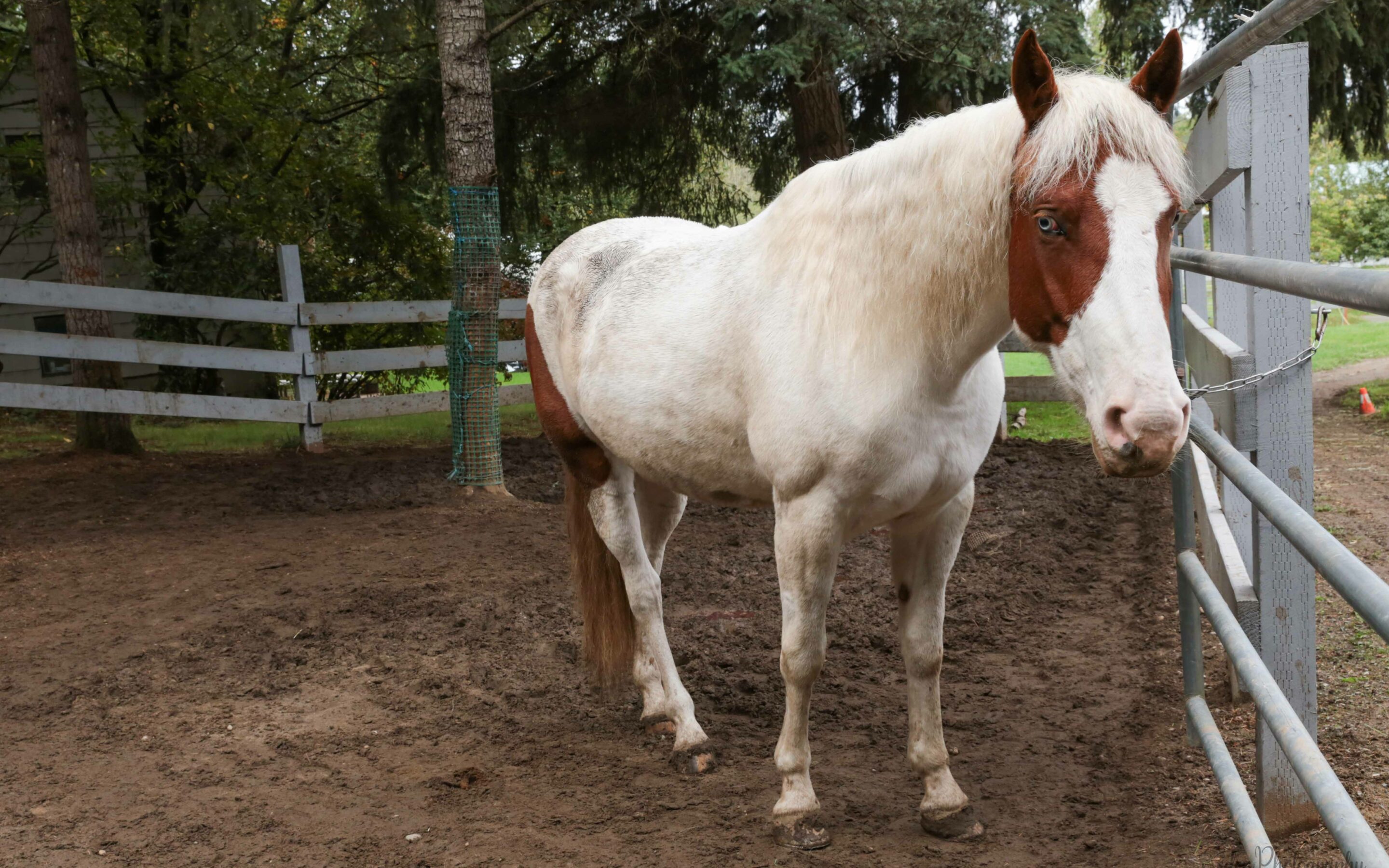
Merry Update
Merry’s diagnosis of left hind lameness with a sensitive proximal suspensory ligament means that SAFE must evaluate the course of action that offers her the best solution. Treatment of this chronic problem is most likely limited to a surgical procedure called a fasciotomy. This involves cutting the fibrous band of tissue wrapped around the suspensory ligament, which allows it to expand and relieves pressure on the ligament. Unfortunately, this surgery involves a long recovery time, meaning that Merry might need to spend as long as 12 months on stall rest. A lengthy period of confinement is very difficult for any horse, but especially so for a young, active horse such as Merry. Of additional concern is the fact that there is no guarantee that the surgery will successfully relieve the pain that Merry experiences. In the meantime, Merry is kept comfortable with Previcox for pain relief, which seems to work well as long as she doesn’t run or exert herself. She’s outdoors 24/7 with other horses nearby, and she seems to enjoy her leisurely lifestyle!
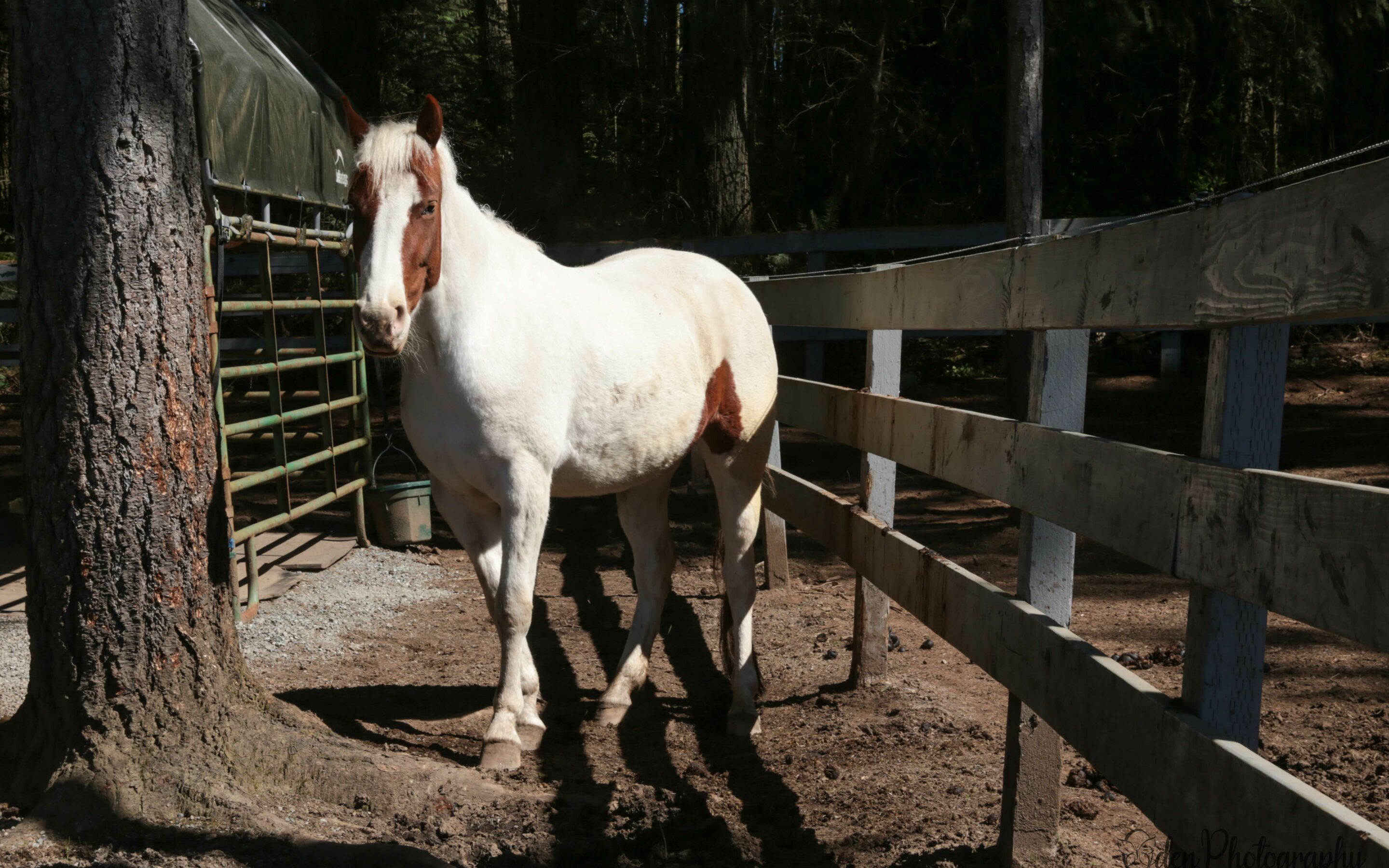
Diagnosing Merry’s Lameness
Merry was ready for a possible adoption this last March, but a pre-purchase vet examination turned up a mysterious lameness on this four year old mare. We have spent the last few months having multiple vet visits trying to get to the root of the problem for this promising mare.
For our first attempt, our vet at Rainland Farm Equine Clinic used their Lameness Locator to pinpoint the problem. On a straight line, Merry was sound. But when working on a circle, the Lameness Locator fairly consistently picked up problems on her left front and left hind. On palpation, the LH suspensory ligament seemed to be causing her some discomfort. A week later, our vet blocked her LH high suspensory and she was sound, so we scheduled an ultrasound to get to the bottom of it.
At that appointment, Merry’s LH was examined with x‑ray and ultrasound. The official diagnosis was left hind lameness with a sensitive proximal suspensory ligament. There were only mild bony changes evident on the x‑ray but the ultrasound showed mild to moderate tears, or fiber disruption, in her suspensory. Because this is a chronic problem, treatment might be limited to a surgical option called a fasciotomy, which involves cutting the small fibrous band of tissue wrapped around the suspensory ligament to allow it to expand and relieve the pressure and pain on the ligament.
Armed with more information, we are now taking some time to think and evaluate what is best for the future of this beautiful, smart mare. We want to make a decision with her best interests in mind. Surgery can be a difficult choice, because it requires a long recovery time. However, she is only 4 years old and we would love to give her a long pain free life.
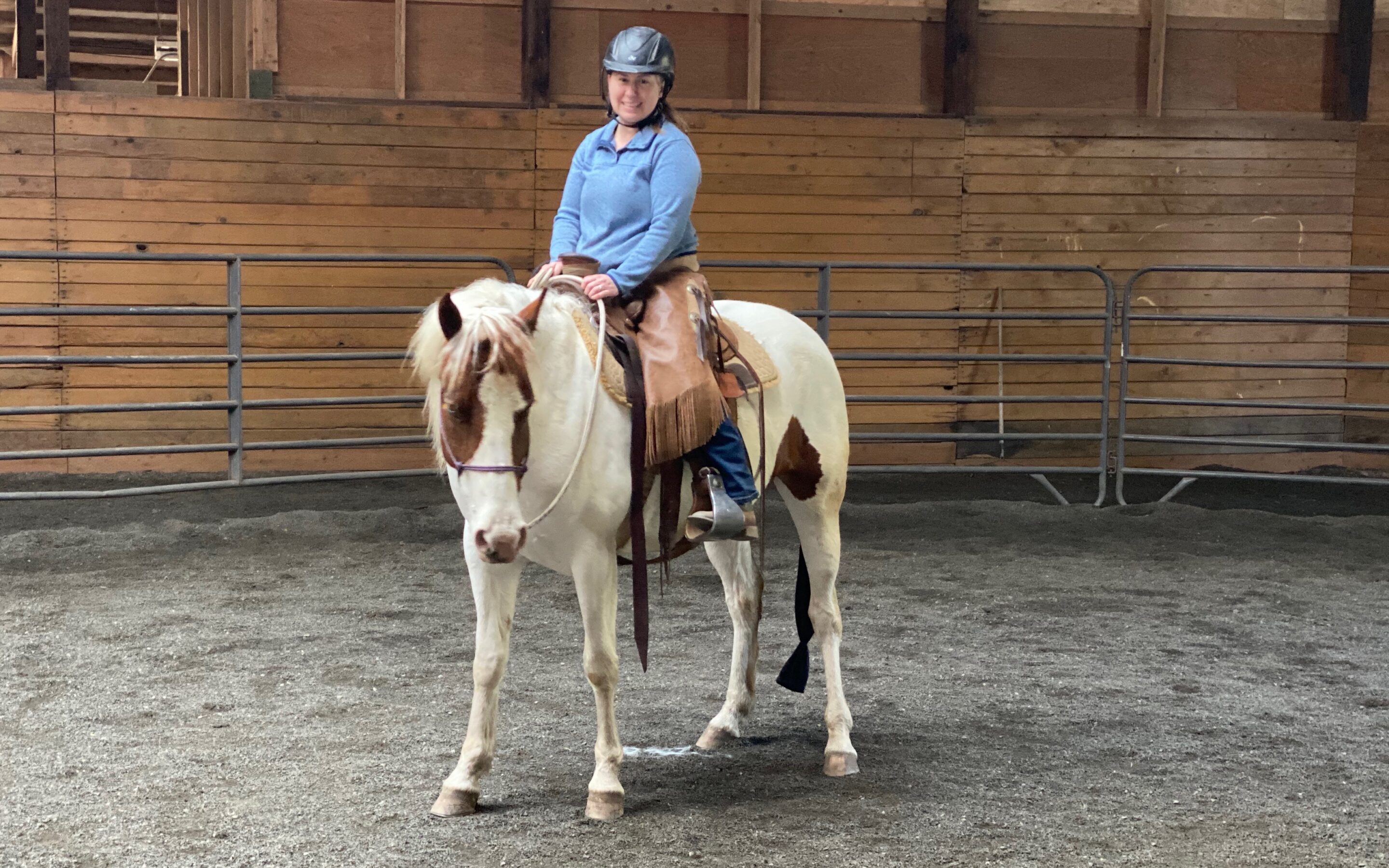
Merry in the Round Pen
Here is a video of Terry working with Merry in the round pen at SAFE. Merry is a terrific horse with a sweet personality. It won’t be long before someone takes home this wonderful mare.
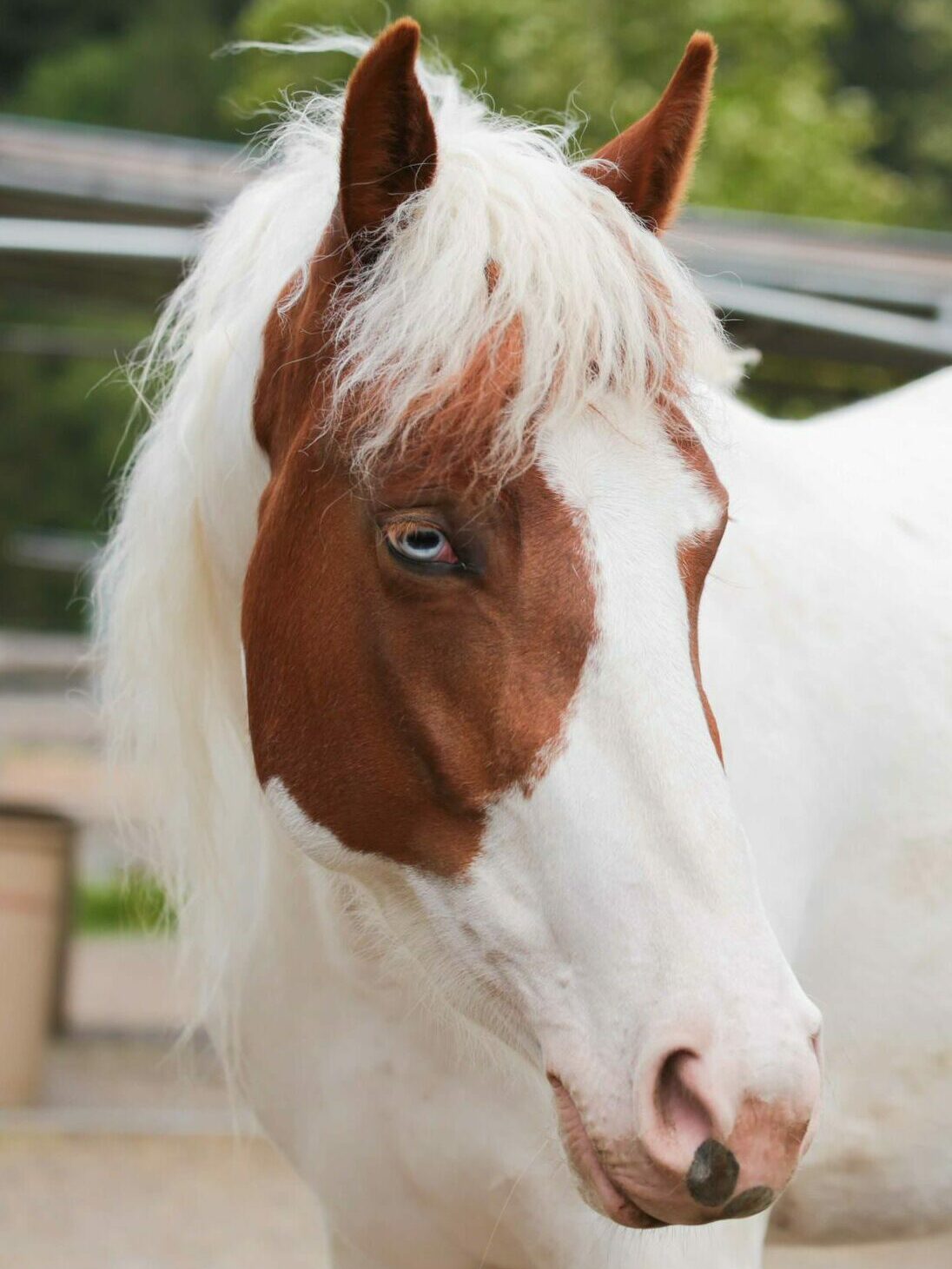
Merry is a Riding Horse!
After 30 days of professional training and working in SAFE’s horsemanship program, Merry is now a riding horse! She is still very green and can have a bit of an attitude at times, but she’s progressing quickly through training and is ready for an advanced rider who is experienced with green horses. We’ll be introducing Merry to some other horses in the coming weeks, so we’ll be able to see how she does in a herd. So far, she’s settled into her stall very politely overnight and does well for the farrier. Merry has come a long way and we’re so excited for her future!

